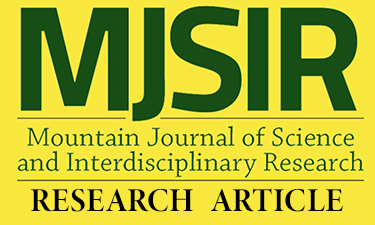Strategic Competences of Local Tourist Guides
Main Article Content
Abstract
This study explored the patterns of strategic communicative competences of local tour guides and foreign english speakers. Participants were 22 tour guides and 87 tourists observed at different tourist spots in Central, Sagada, Mountain Province. Their conversations were recorded and went under rigorous discourse analysis. Data were transcribed, organized, clustered, thematized, and validated by the participants. Results suggested that the local tour guides experienced four major communication breakdowns: resource deficit, processing time pressure, perceived deficiency in one’s own language, and perceived deficiency in the interlocutor’s performance. In light of the communication problems, verbal and non-verbal strategies were used to address communication breakdowns, namely: avoidance and reduction, achievement or compensatory, stalling/time-gaining, self-monitoring, and interactional. Further, the tour guides are creative in using non-verbal strategies, which function either as: replacing or accompanying verbal output. Results are discussed in terms of implications of the local tour guides' communicative engagement despite inherent communication breakdowns. Given the significant variety of strategic competences of the local tourist guides, these competences are expected to be reinforced through educational material, a brochure that emphasizes the communication gambits ready to be used in their workplace.
Article Details
References
Brown, G. and Yule, G. (1983). Discourse Analysis. Cambridge: Cambridge University Press.
Canale, M., & Swain, M. (1980). The theoretical bases of communicative approaches to second language teaching and testing. Applied Linguistics, I/I: 1-47.
Campbell, D.T., & Fiske, D.W. (1959). Convergent and discriminant validation by the multitraitmultimehod matrix. Psychological Bulletin 30.
Celce-Murcia, M., Dörnyei, Z., & Thurrell, S. (1995). Communicative Competence: A Pedagogically Motivated Model with Content Specifications. Issues in Applied Linguistics, 6(2).
Celce-Murcia, M., Dörnyei, Z., & Thurrell, S. (1993). A Pedagogical Framework for Communicative Competence: Content Specifications and Guidelines for Communicative Language Teaching. Deseret language and Linguistic Society Symposium.
Dobao, A., & Martinez, I. (2007). Negotiating Meaning in Interaction between English and Spanish Via Communication Strategies. Atlantis, 29(1): 87-105.
Dörnyei, Z., & Kormos, J. (1998). Thames Valley University Problem-Solving Mechanisms in L2 Communication: A Psycholinguistic Perspective. Cambridge University Press. P35-P37.
Dörnyei, Z., & Scott, M. (1997). Review Article: Communication Strategies in a Second Language: Definitions and Taxonomies. Language Learning, 47(1).
Dulnuan, J. (2005). Perceived Tourism Impact on Indigenous Communities: A Case Study of Sagada in Mountain Province. The Cordillera Review.
Edwards, R. (1998). The measurement of Strategic Competence in Second Language Learners. University of Montreal.
Faerch, C., & Kasper, G. (1983). Strategies in interlanguage communication. Harlow, UK: Longman.
Isya, M. (2018). Compensatory Strategies in Facing Communication Breakdown Used by Efl Students in Surakarta. Universitas Sebelas Maret Indonesia. 2nd English Language and Literature International Conference (ELLiC) Proceedings.
Kuen, G., Galea, S., & Heng, G. (2017). Effect of Oral Communication Strategies Training on the Development of Malaysian English as a Second Language Learners’ Strategic Competence. International Journal of Education & Literacy Studies, 5(4).
Krauss, R., Rauscher, F., Chen, Y. (1996). Gesture, Speech, and Lexical Access: The Role of Lexical Movements in Speech Production. Psychological Science, 7(4): 226-231.
Li-Sheng, X. (2000). Strategic competence for Intercultural communication. Journal of Zhejiang University (Science), 1(4): 476-480.
Paribakht, T. (1985). Strategic competence and language proficiency. Applied Linguistics, 6, 132-146.
Philippine Congress. (2009). The Tourism Act of 2009. https://www.officialgazette.gov.ph/2009/ 05/12/republic-act-no-9593-s-2009/
Rabab’ah, G. (2016). The effect of Communication Strategy training on the development of EFL Learners’ Strategic Competence and Oral Communicative Ability. J Psycholinguist Res., 45: 625-651.
Selinker, L. (1972). Interlanguage. IRAL, 10, 209230.
Tarone, E. (1980). Communication Strategies, Foreign Talk, and Repair in Interlanguage. TESOL Convention. San Francisco. Language Learning, 30(2).
Tarone, E. (1981). Some thoughts on the notion of Communication Strategy. TESOL Quarterly, 15(3).
Tarone, E. (1983). Teaching Strategic Competence in the Foreign Language Classroom. Studies in Language Learning.
Varadi, T. (1992). Communication Strategies: A Psychological Analysis of Second-Language Use by E. Bialystok and The Use of Compensatory Strategies by Dutch Learners of English by N. Poulisse, T. Bongaerts, & E. Kellerman. Issues in Applied Linguistics, 13, 434-440.
Wang, D., Lai, H., & Leslie, M. (2014). Chinese English learners’ strategic competence. Media New York.
Willems, G. (1987). Communication strategies and their significance in Foreign Language Teaching. System, 15, 351-364.

